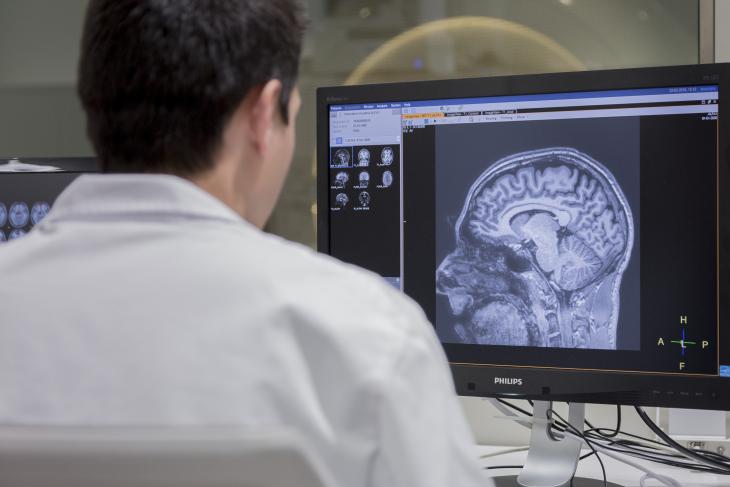04 Apr | 2023
BBRC researchers identify key areas of the brain where the presence of amyloid could predict cognitive decline

Research led by the Neuroimaging Research Group of the Barcelonaβeta Brain Research (BBRC), a research center of the Pasqual Maragall Foundation, and with the support of the ”la Caixa” Foundation, has shown the relationship between the accumulation of amyloid protein in certain brain regions and cognitive decline. The results support the value of the regional visual reading of the amyloid PET technique to provide information about the future cognitive decline of these people. This effect has been observed in participants carrying the APOE-ε4 genotype who are at increased risk of amyloid accumulation and who experience faster progression of cognitive changes.
The study, published in the scientific journal EJNMMI Research, deepens the BBRC line of research that studies the brain correlates of the preclinical phase of Alzheimer's and risk factors for the disease. APOE-ε4 gene carriers with amyloid accumulation in certain brain regions showed more pronounced cognitive decline three years later, affecting episodic memory and executive function. The analysis of these dressings in different areas of the brain could be particularly useful for intervention trials and preventive interventions.
New findings on the amyloid PET technique
The research provides new insights into the amyloid positron emission tomography (PET) technique, one of the reference techniques for determining a person's risk of developing Alzheimer's in the future. The main advantage of this technique over fluid-based biomarkers is that it provides information on the brain regions affected by the pathology. The results indicate that measurements in different areas of the brain can predict future cognitive decline. “Although the regional pattern of amyloid positivity is not normally taken into account in clinical routine, there is evidence that the consideration of this regional pattern has prognostic value”, explains Dr. Anna Brugulat, postdoctoral researcher of the Research Group in Neuroimaging from the BBRC and first author of the publication. “The main novelty of our study is that it highlights the value of these regional analyzes in detecting cognitive decline,” she points out.
To carry out this project, the research team has analyzed data from 352 participants without cognitive alterations from the Alfa+ Study, which has the support of the ”la Caixa” Foundation, and compared them with data from the Amsterdam Desmentia Cohort. Alpha+ participants underwent an amyloid PET scan, magnetic resonance imaging (MRI), and other tests to determine the APOE genotype. Likewise, their cognitive performance was measured at the same time as the tests and after three years. The results suggest that amyloid beta protein deposition in late-arriving regions and the APOE-ε4 gene combine to determine cognitive decline in individuals without prior cognitive impairment.
"The study's conclusions are relevant to understand the value of regional visual reading of amyloid PET," explains Dr. Juan Domingo Gispert, head of the BBRC Neuroimaging Research Group. “Positivity for this protein in key brain regions could serve to identify those cognitively healthy people who are at higher risk of imminent decline and who, therefore, stand to benefit most from clinical trials and preventive interventions,” concludes the researcher.
Bibliographic reference
Brugulat-Serrat, A., Sánchez-Benavides, G., Cacciaglia, R. et al. APOE-ε4 modulates the association between regional amyloid deposition and cognitive performance in cognitively unimpaired middle-aged individuals. EJNMMI Res 13, 18 (2023). https://doi.org/10.1186/s13550-023-00967-6









